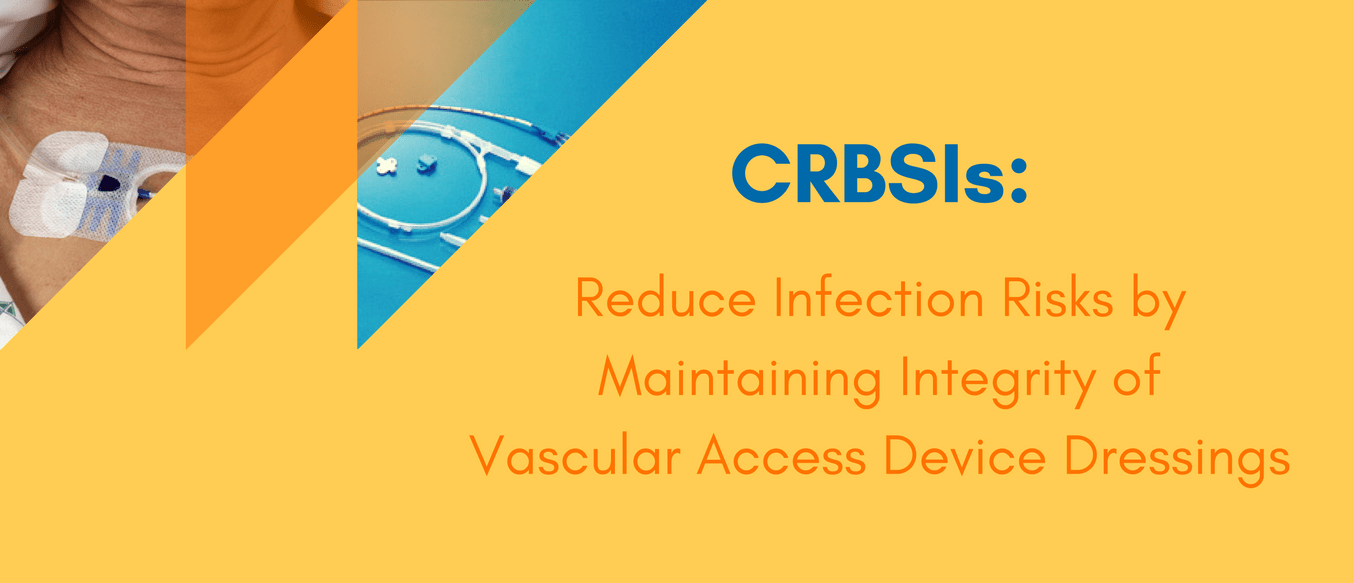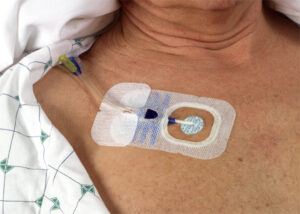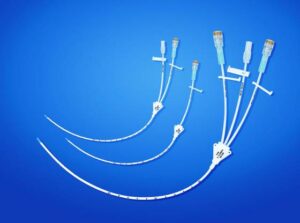
This is the first of a 3-part series focusing on catheter-related bloodstream infections (CRBSIs). As catheter use increases, bloodstream infections (BSIs) resulting from intravascular catheters have become a costly complication of health care.
To start, the terms CRBSI and central line–associated bloodstream infection (CLABSI) are often used interchangeably to describe intravascular device (IVD)–related bloodstream infections. However, there are differences. According to the Association for Professionals in Infection Control and Epidemiology (APIC)1:

- CRBSI is a rigorous clinical definition, defined by precise laboratory findings that identify the central venous catheter (CVC) as the source of the BSI and that are used to determine diagnosis, treatment, and possibly epidemiology of BSI in patients with a CVC
- CLABSI is a term used only for surveillance purposes to identify BSIs that occur in the population at risk (patients with central lines)
The costs of treating BSIs resulting from intravascular catheters range from $670 million to $2.68 billion annually in the US2, and up to $29,156 per incidence of a CLABSI.3 Unfortunately, CRBSIs are a common complication in patients admitted to the Intensive Care Unit. In fact, since 2008, hospitals are no longer reimbursed by the US Centers for Medicare and Medicaid Services for hospital-acquired infections (HAIs) like CRBSI.4 As a result, healthcare providers are under great pressure to decrease the rates of HAIs.
 CRBSI Quality Improvement is a key objective for most practices and facilities. Because dressing disruption has been determined to be a major factor in the development of CRBSIs,5 the importance of ensuring the integrity of medical dressings and devices over extended periods of time cannot be overstated.
CRBSI Quality Improvement is a key objective for most practices and facilities. Because dressing disruption has been determined to be a major factor in the development of CRBSIs,5 the importance of ensuring the integrity of medical dressings and devices over extended periods of time cannot be overstated.
A large cohort of patients was studied in a randomized multicenter trial to determine the importance of dressing disruption on the risk for development of CRBSI.5 The results showed:
- 67% (7,347 of 11,036) of the dressing changes were performed before the planned date due to soiling or undressing
- When the final dressing was disrupted, the risk of catheter colonization or infection increased 12-fold
These results may have you questioning the durability of dressings. This was precisely what initiated another study, which evaluated the durability and associated costs of different CVC dressings.6
During the 12-month trial period, a total of 1229 CVC dressings were observed from 590 CVCs. The results demonstrated that few CVC dressing remained adherent for 7 days. While 1 dressing appeared to last longer than the others, it was still below the recommended standard and at increased cost. The study also considered the associated time and costs of the dressing changes.
While 1 dressing had a median duration of 68.5 [32-105] hours, the other 3 dressings compared at 43.5, 46.0 and 40.5 hours (P<0.001). There was no significant difference in the median dressing duration between the other 3 dressings (p=0.74).
The results of these studies demonstrate the need to ensure the integrity of vascular access device dressings between scheduled changes. It is clear this can’t be accomplished by a dressing alone. The superior adhesiveness of Mastisol® Liquid Adhesive has been clinically demonstrated. Using Mastisol®:
- Reduces the likelihood of dressing disruption 7, 8
- Minimizes the risk of infection by creating a lasting occlusive dressing barrier 9,10
 For more information about Mastisol® Liquid Adhesive, please contact your sales consultant or Eloquest Healthcare®, Inc., call 1-877-433-7626 or visit www.eloquesthealthcare.com.
For more information about Mastisol® Liquid Adhesive, please contact your sales consultant or Eloquest Healthcare®, Inc., call 1-877-433-7626 or visit www.eloquesthealthcare.com.
Minimizing infection risk is an essential part of optimizing “The Triple Aim” of the Affordable Care Act. Eloquest Healthcare is committed to providing solutions that can help you reduce the risk of conditions like a CAUTI, CLABSI, or SSI.
Join us next time for the second of this 3-part series where we’ll explore the impact of CHG-compatible products on CRBSIs in our post entitled, “CHG Compatibility and CRBSI Reduction: Does it Matter?”
References
- Accessed September 18, 2017.
- Shah H, Bosch W, Thompson KM, et al. Intravascular catheter-related bloodstream infection. Neurohospitalist. 2013;3(3):144-151.
- Scott RD II. The Direct Medical Costs of Healthcare-Associated Infections in U.S. Hospitals and the Benefits of Prevention. Centers for Disease Control and Prevention. March 2009. Available at: http://www.cdc.gov/hai/pdfs/hai/scott_costpaper.pdf.
- Stone PW. Changes in Medicare reimbursement for hospital-acquired conditions including infections. Am J Infect Control. 2009;37:17A-18A
- Timsit JF, Bouadma L, Ruckly S, et al. Dressing disruption is a major risk factor for catheter-related infections. Crit Care Med. 2012;40:1707-1714.
- Richardson A, Melling A, Straughan C, et al. Central venous catheter dressing durability: an evaluation. J Infect Prev. 2015;16(6):256–261.
- Pullen D. Quality Improvement Initiative to Improve Dressing Adherence Reveals Improved Dressing Adherence Observations on a Before-After Analysis. Presentation at AVA 2014 Annual Scientific Meeting, Washington DC, September 2014. Guide to the Elimination of Catheter-Related Bloodstream Infections. Association for Professionals in Infection Control and Epidemiology; Washington, DC: 2009. https://apic.org/.
- Niehaus S, McCord J. Improving Adhesion of Internal Jugular Dressings in the Intensive Care Unit. Presentation at Association for Vascular Access Annual Scientific Meeting in Orlando, FL, September 2016.
- Browne B, Moffo H. Quality Improvement Initiative Results in Fewer Dressing Disruptions and Improved Adherence to Best Practices. Presentation at Greater Cincinnati AACN Chapter, 28th Annual Trends in Critical Care Conference, Cincinnati, OH, April 2016.
- Boudreaux A. Ventriculostomy Dressing Process Improvement. Presentation at National Teaching Institute & Critical Care Exposition, Boston, MA, May 2013.







